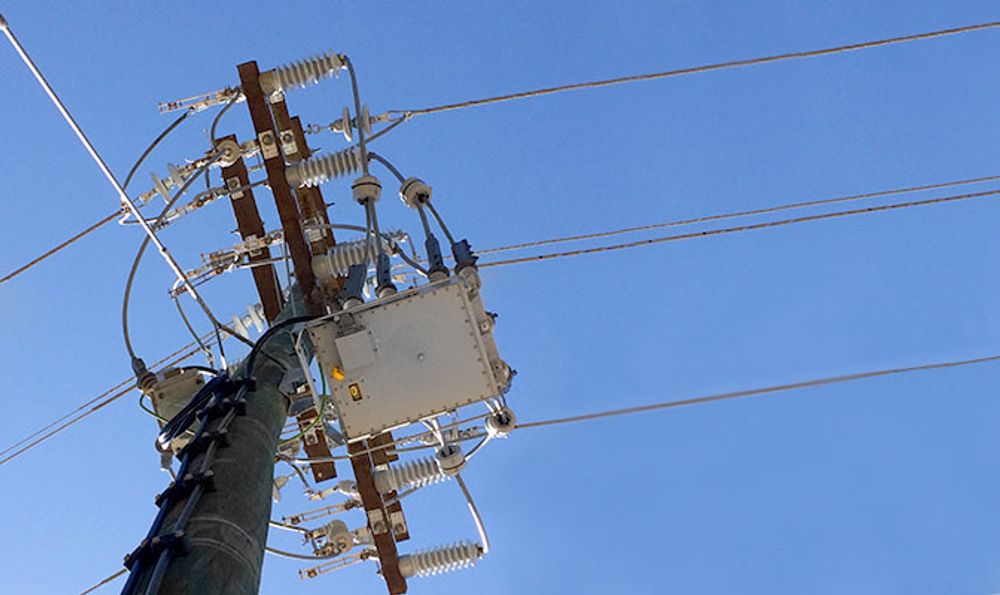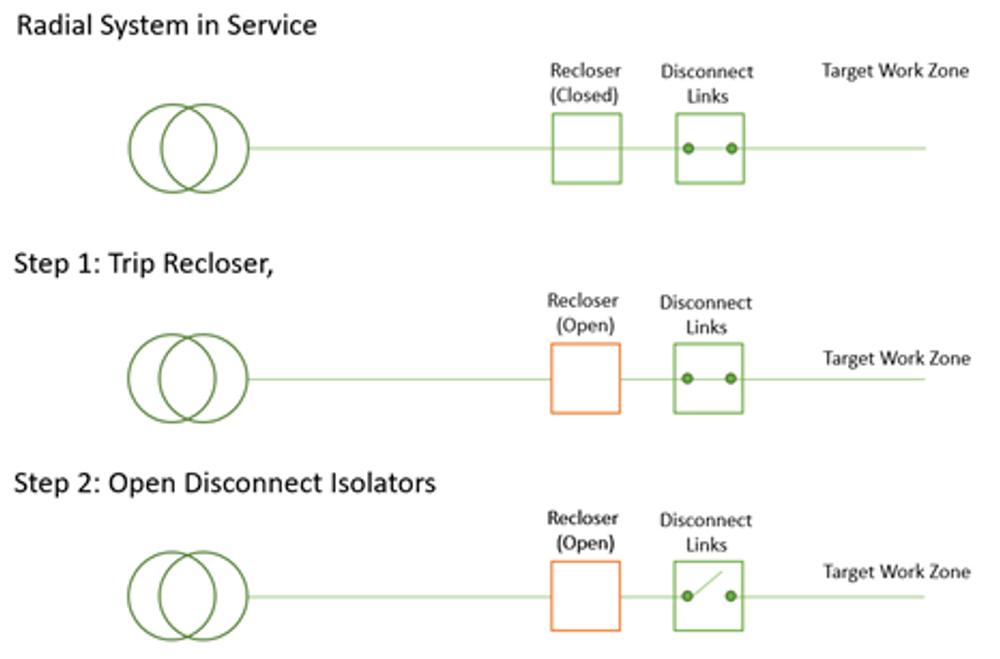Technical Article
Updated 03/2025
Understanding the Mechanical Trip Function of an OSM Recloser

To the user of the NOJA Power OSM Recloser, an often misunderstood function is the Mechanical Trip system on the Recloser Tank. Reclosers systems that use microprocessor control generally rely on electrical operation for actuation of the breaker, but there are a few cases where mechanical actuation is required. The key to understanding work practices around mechanical tripping of reclosers is understanding the performance capabilities of the equipment, and understanding the operational objectives of using the mechanical lockout.
The General Application of Mechanical Trip
Reclosers are a form of medium voltage circuit breaker, and their general application is to protect overhead distribution lines and improve reliability of the feeder by mitigating the impacts of momentary faults (improving reliability by 80%). However, when works are to be conducted upon the downstream line, the recloser may be required to interrupt the supply so that isolation practices can be put in place.
Generally, any circuit breaker that uses a vacuum interrupter as the interrupting mechanism does not qualify as a point of isolation. The core reason being that Vacuum interrupter Basic Insulation Level, or impulse withstand capacity, does not provide isolation of downstream from lightning impulse. Accordingly, the simple, cost effective solution is to include a set of disconnect links in series with the recloser. These disconnect links cannot break current, but if the line is de-energised by the upstream recloser, safe working isolation can be achieved using disconnect links.
The mechanical trip and lockout functionality of the recloser comes into play in the event that closing the circuit breaker could cause an energisation of the section of network that may pose a risk to operators or property. By following a risk-based approach, operators of the overhead recloser system may elect to instigate a mechanical lockout on the recloser device, preventing any remote or local tripping of the device until the crew at site has reset the mechanical lockout function of the breaker.
A critical risk is the operation of a disconnect link without the recloser being in the open position interrupting the current, or the accidental closure of the recloser while some phase disconnectors remain open. Using the mechanical lockout feature mitigates the risk of external sources from accidentally creating this scenario. Figure 1 highlights an example isolation sequence, and where risk of re-energisation is considered high, Step one can include either an open by mechanical lockout, or the application of mechanical lockout once a trip has been issued electronically.

Mechanical Trip under Fault
A frequently asked question often arises with the recloser mechanical trip/lockout feature, “Can it open under fault?”
The short answer is yes, with the key reason being the architectural design of the actuating system in the NOJA Power OSM Recloser. OSM Reclosers use a magnetic latch in the closed position which holds the VI closed, holding the actuator opening spring in the primed position for opening with sufficient additional holding margin to withstand a 16kA fault electromagnetic force. The mechanical trip/lockout handle adds additional force in complement to the spring direction. Around 30kg of weight applied to the mechanical lever in combination with the primed open springs is sufficient to defeat the magnetic latch, causing the breaker to open. For the OSM Recloser, a conventional electrical open uses a DC pulse to disrupt the magnetic latch, where the springs provide the interrupting speed of operation. The mechanical trip method simply replaces the DC pulse, where the springs will ensure the breaker opens at sufficient speed to interrupt the full rating of the OSM Recloser.
The added feature of the mechanical lockout is that it disengages the capability for the recloser to execute any close. The mechanical actuator arm needs to be returned to the “up” position before any close can occur, as it is a mechanical interlock of the breaker position.
“The yellow ring pull mechanical trip lever in the base of all of our tanks is easy to operate with a hook stick and is an additional safety mechanism available to linesmen who want to mechanically lock the device by pulling the lever and leaving it in the down position,” reports NOJA Power Group Managing Director Neil O’Sullivan.
“ Remote operation can of course be isolated by using the local remote button in the control cubicle, whereas the mechanical trip lever electrically isolates the trip coils from the capacitors located in the control cubicle using micro switches located in the tank to ensure there is no way the device can be closed when the trip lever is in the down and locked out position”.
Conclusion
Whilst global works practices for mechanical trip functionality varies around the world, operators can be assured of the safety of using this feature to interrupt currents from 1 A through to the full interrupting capacity of the breaker. As all OSM Reclosers have a patented arc fault vent, this system is the world’s safest recloser providing unmatched peace of mind in distribution switchgear.
Want to stay up to date with Electrical Distribution Technology?
Join our list for a free weekly technical bulletin, as we share our Global Electrical Engineering experience directly to your inbox.
Subscribe →